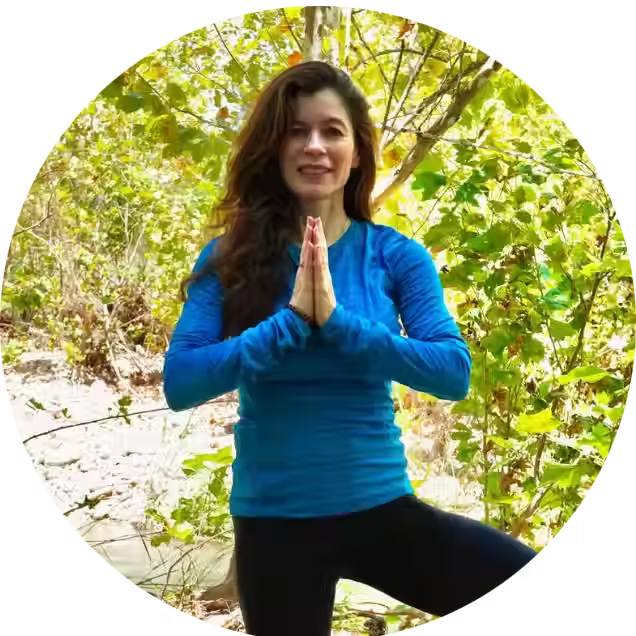Returning to What’s True, Part I - Reconnecting with the Present
- Lane Igoudin
- Jan 4, 2021
- 3 min read
T’shuvah – the return, notice the word – re-turn, as in turning back, back to the source, back to our sacred authentic selves and our relationships with what’s holy in the world – is something that can be practiced throughout the day.
For an observant person, the daily cycle of prayer rituals provides the time and space to step out of the mundane activities and return to the spiritual world within and without.
In addition to prayers, there are many other opportunities to reawaken to the present moment, right there – in the flow of the day, amidst regular activities.
A recent memory. I was harvesting Swiss chard in the monastery garden just the way Phap De, an elderly monk in a mud-colored robe, taught me: cutting all the leaves of the plant, save top three, down to the stem – when I heard a bell ringing insistently atop the hill.
I froze, holding a bunch of thick, red-veined emerald leaves in one hand, and my garden shears in the other. Looking down, I focused my mind on my breath: first breath in and out, second – in, out, and after the third exhalation, I raised my head and went back to my work.
Half an hour later, the five-foot, bronze bell suspended from the pagoda rafters pagoda rang again, sending deep, gentle chimes through the chapparal-covered valley. I stopped halfway up the hillside stairs to the kitchen, holding the bowl piled high with chard, counted three breaths, labored now from climbing the staircase, and then took the next step up.
Every bell sound, telephone ring, a car honk, ambulance siren, even the roar of an airplane overhead are “bells of mindfulness,” the kind monks taught me at Thich Nhat Hahn’s Deer Park Monastery in Southern California. These bells remind us to suspend our activities and notice ourselves.

Deer Park Monastery bell, Escondido, Calif. © Lane Igoudin, 2020
We spend most of our waking hours responding to tasks at hand: one, another, on to the next, to the next, to the next; unaware of our bodies, unless there is a jolt of pain, or discomfort.
We merge with our reactions, losing the authentic, clear view of the world, of who we are, of the divine spark within us, of what the world really needs of us, and what we deeply, truthfully need of it. Days, sometimes weeks go by, when the only sense of direction is the direction in which external tasks and pressures are pushing us.
Jewish and other spiritual traditions teach us that each moment in our life offers an opportunity to reconnect with the present. And it’s re-centering and healing.
Here’s a sampling of some practices:
Yiscah Smith, AJS Faculty Member and Jewish spiritual innovator, starts all her classes and lectures by inviting her students “to breathe deeply together three times – deep and focused inhalations and exhalations” as an entryway into their own sacred space. Yiscah asks them to label and visualize each of these deep breaths as
(1) Release (‘shikhrur’) of all tension in your mind and body,
(2) Presence (‘nokhekhut’), that is the awareness of the moment, of yourself, and of your setting, and finally,
(3) Connection (‘yitzirat ha-kesher’) to the group, to the topic being discussed.
Done as a group practice, she observes, “it is truly incredible to sense through the virtual vibrations the effect this has on the group” and on each individual.
Deer Park Monastery’s “Be Mindful in Daily Life” explains how to turn external sounds into reminders to mindfully notice the moment.
“When we hear one of these bells of mindfulness, we stop our conversations and whatever we are doing and bring awareness to our breathing. The bell has called out to us: Listen, listen, this wonderful sound brings me back to my true home.
By stopping to breathe and to restore our calm and our peace, we become free, our work becomes more enjoyable, and the friend in front of us becomes more real. With just three conscious breaths, we can release the tensions in our body and mind and return to a cool and clear state of being.”
Finally, technology can help too. Several free apps like Big Bang Bonger, or Chime Me Big Ben will ring Westminster chimes on your phone or laptop, every 15 minutes, or as often as you like, to remind to you to stop what you’re doing and return to yourself – t’shuvah - wherever you are.
Breathe, relax, and return.
______________________________________________________________________________
Lane Igoudin, M.A., Ph.D., blogs for Applied Jewish Spirituality and produces Blessing the Sea, a monthly newsletter on Jewish mindfulness. He is a member of Temple Beth Shalom, a Conservative synagogue in Long Beach, California, and of Zen Center of Los Angeles. For more information, please visit www.laneigoudin.com.



